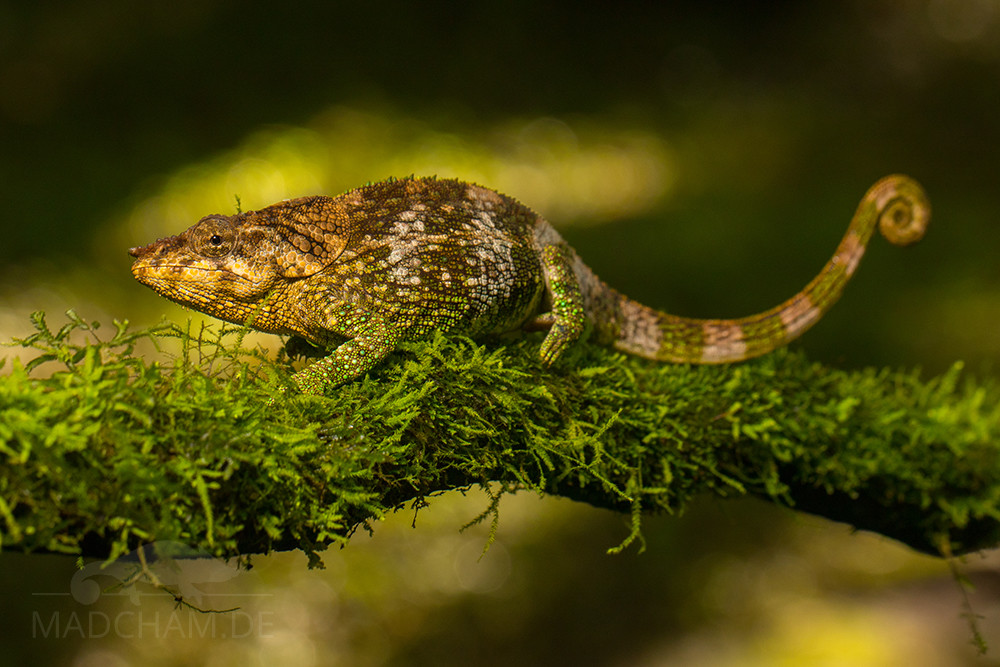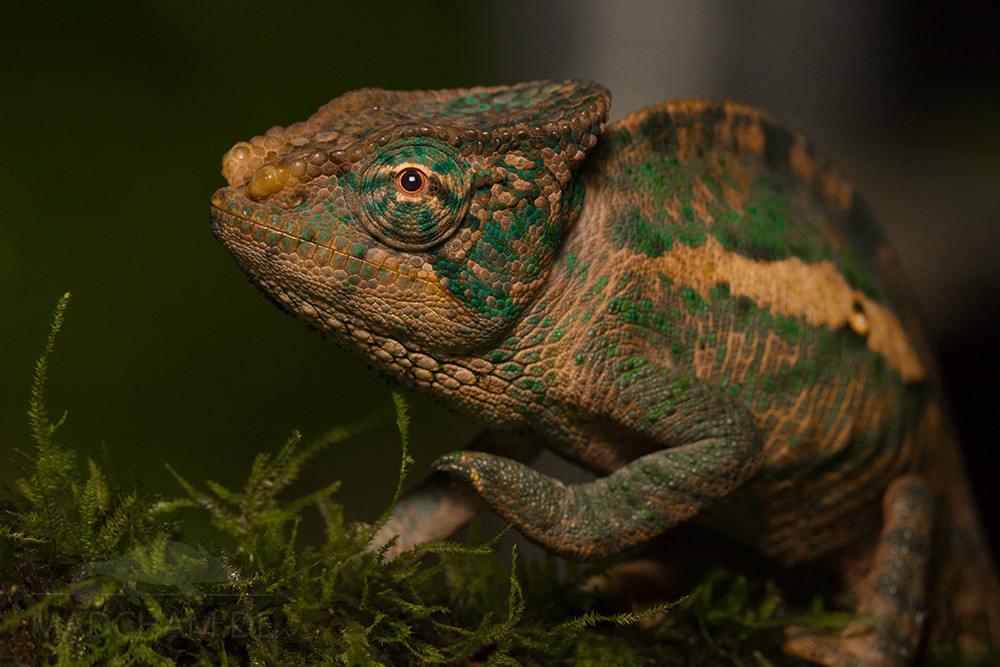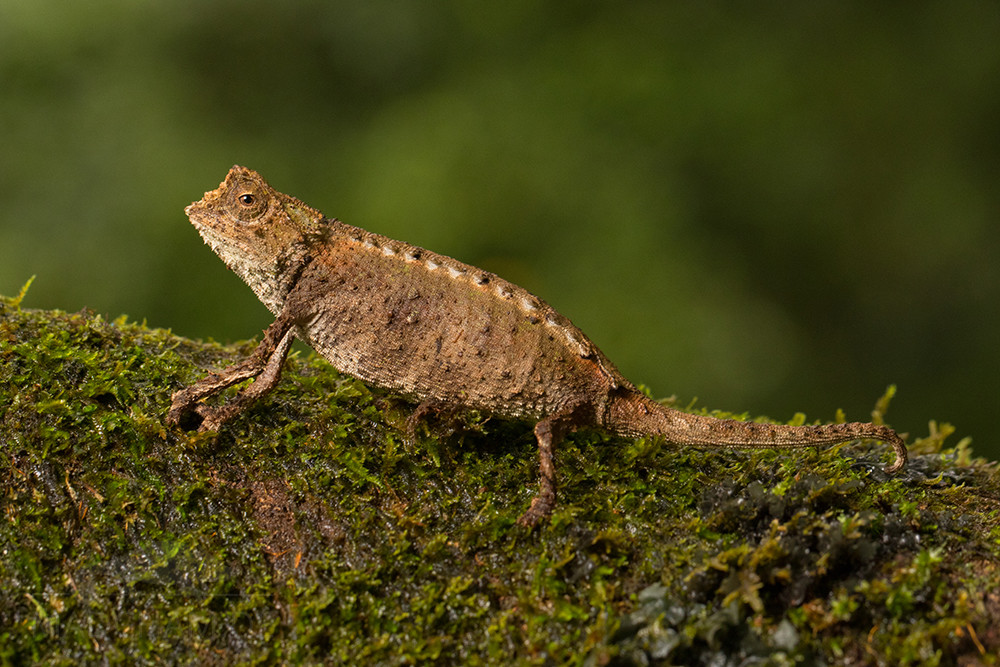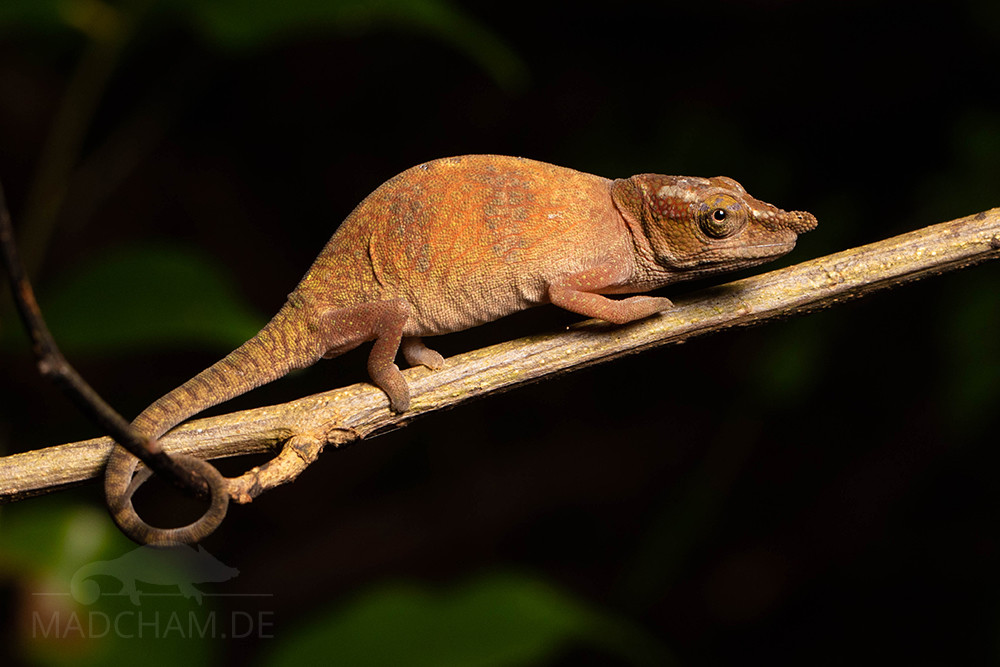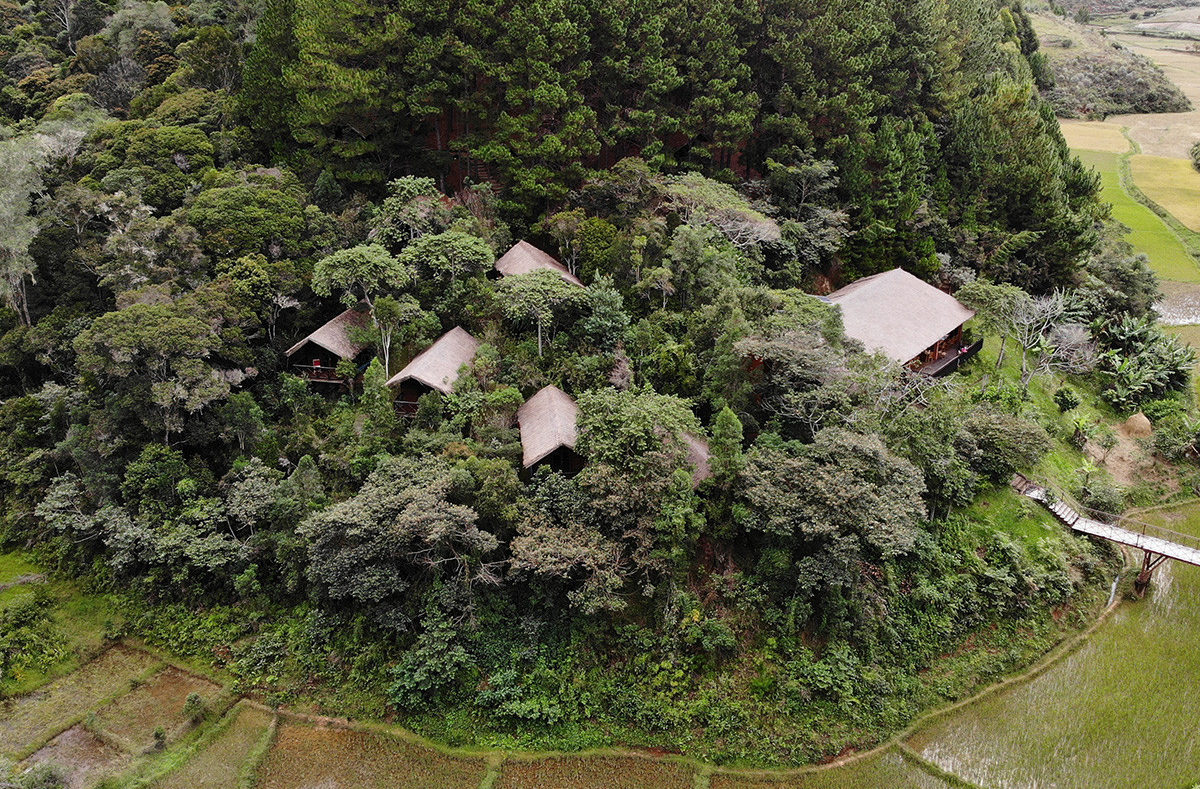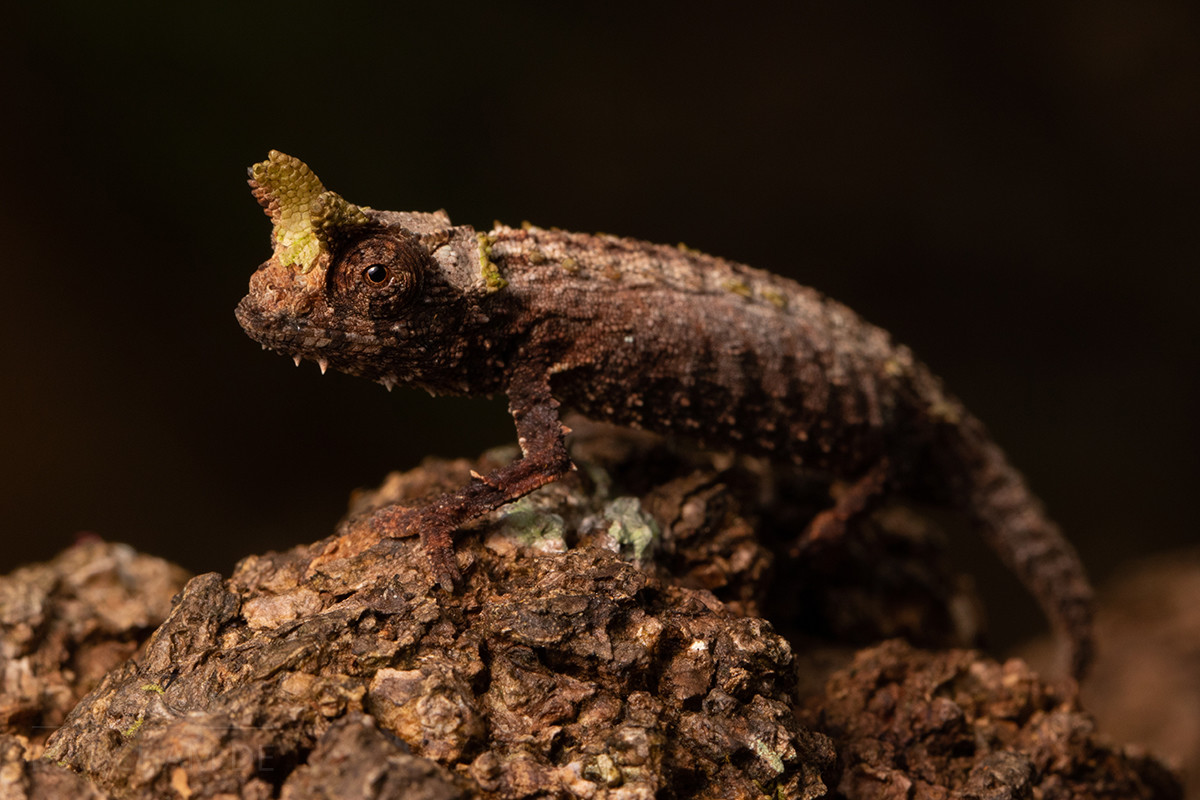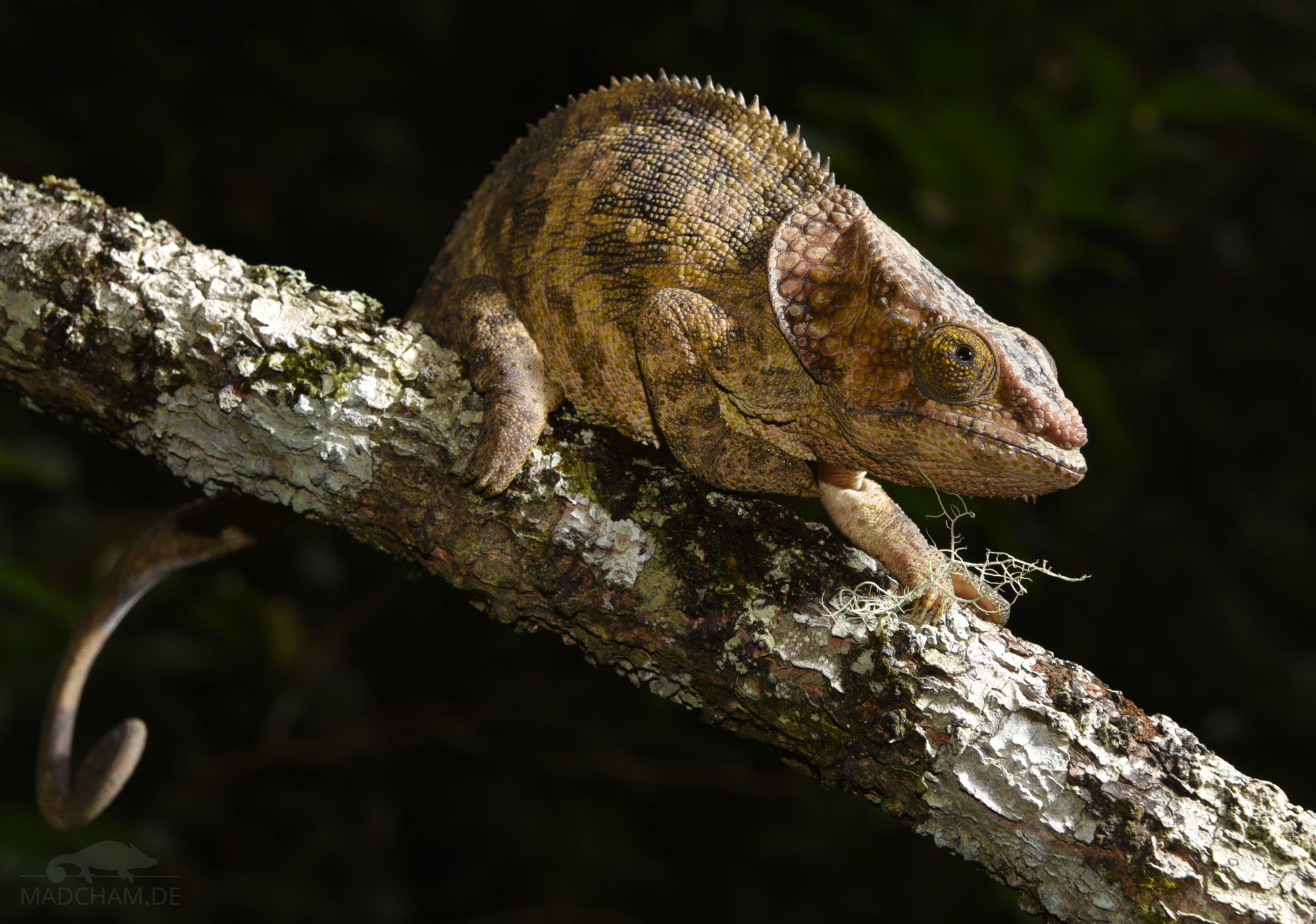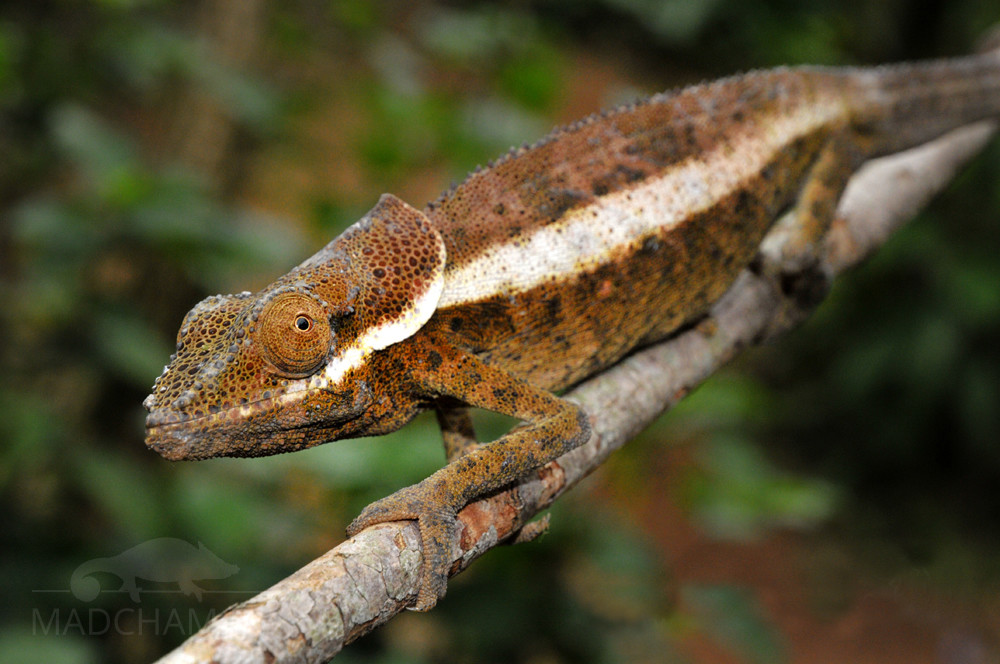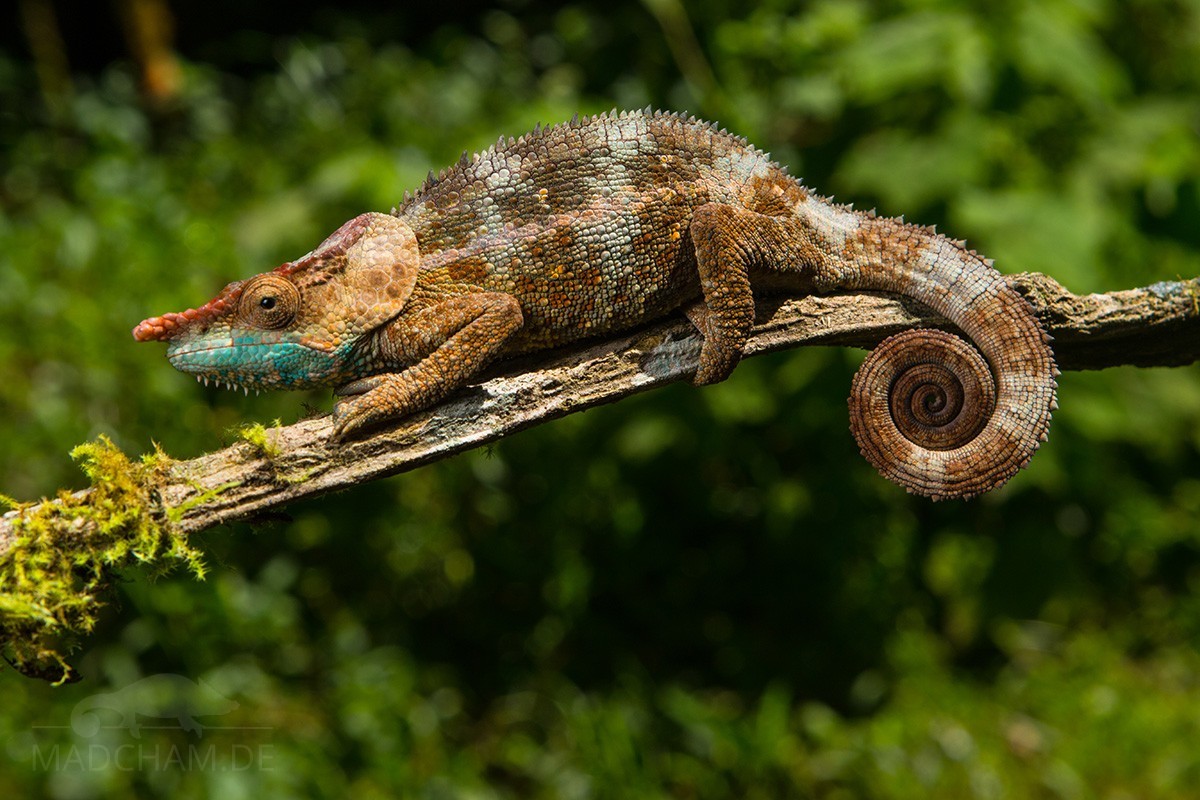Brookesia nofy
First description: Rakotoarison, Hasiniaina, Glaw and Vences, 2024 Origin of the species name: The biologist Andolalao Rakotoarison named the species after the Malagasy word for dream. On the one hand, this fits its origin,...
Calumma amber
First description: Raxworthy & Nussbaum, 2006 Origin of the species name: Christopher J. Raxworthy from the American Museum of Natural History, New York (USA) and Ronald A. Nussbaum from the University of Michigan, Ann...
Calumma ambreense
First description: (Ramanantsoa, 1974) Origin of the species name: The zoologist Guy A. Ramanantsoa of the University of Antananarivo, Madagascar, named the species after its origin, the Amber Mountain. Originally described as a subspecies...
Brookesia antakarana
First description: Raxworthy & Nussbaum, 1995 Origin of the species name: Christopher J. Raxworthy from the American Museum of Natural History, New York (USA), and Ronald A. Nussbaum from the University of Michigan, Ann...
Calumma boettgeri
First description: (Boulenger, 1888) Origin of the species name: The Belgian zoologist George Alber Boulenger, at that time working at the Natural History Museum in London (Great Britain), named this chameleon species in honor...
Info about Madagascar
Madagascar is the fourth largest island in the world with 587,295 km². This is more area than France and Switzerland together. Madagascar is located in the Indian Ocean, about 500 to 600 km east...
Brookesia betschi
First description: Brygoo, Blanc & Domergue, 1970 Origin of the species name: Édouard-Raoul Brygoo, Charles Pierre Blanc and Charles Antoine Domergue of the then Institut Pasteur in Antananarivo, Madagascar dedicated the species to Jean-Marie...
Calumma brevicorne
First description: (Günther, 1879) Origin of the species name: The German zoologist Albert Carl Ludwig Gotthilf Günther, then director of the Zoological Department of the Natural History Museum of London (Great Britain), borrowed the...
Calumma cucullatum
First description: (Gray, 1831) Origin of the species name: The English zoologist John Edward Gray was very brief in his description of this chameleon species: it consists of just keywords instead of a coherent...
Calumma crypticum
First description: Raxworthy & Nussbaum, 2006 Origin of the species name: Christopher J. Raxworthy from the American Museum of Natural History, New York (USA) and Ronald A. Nussbaum from the University of Michigan, Ann...


